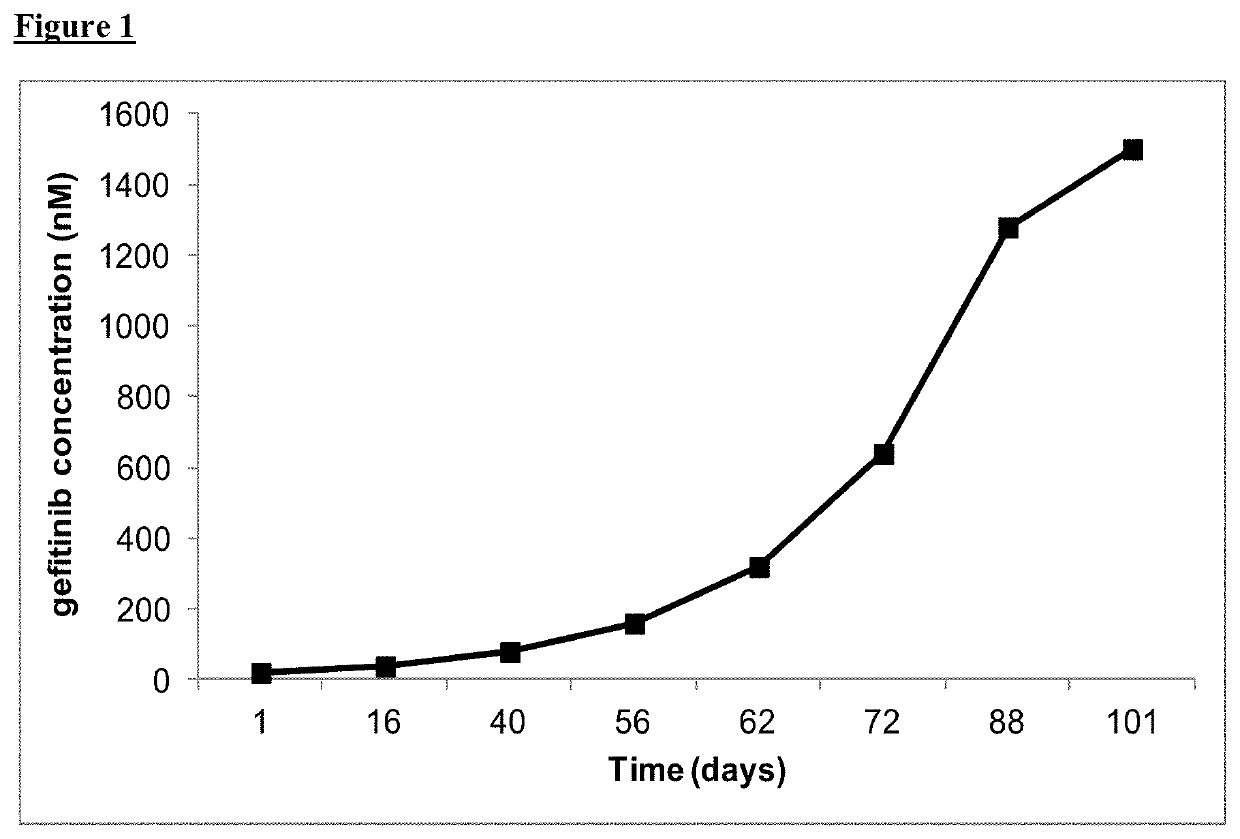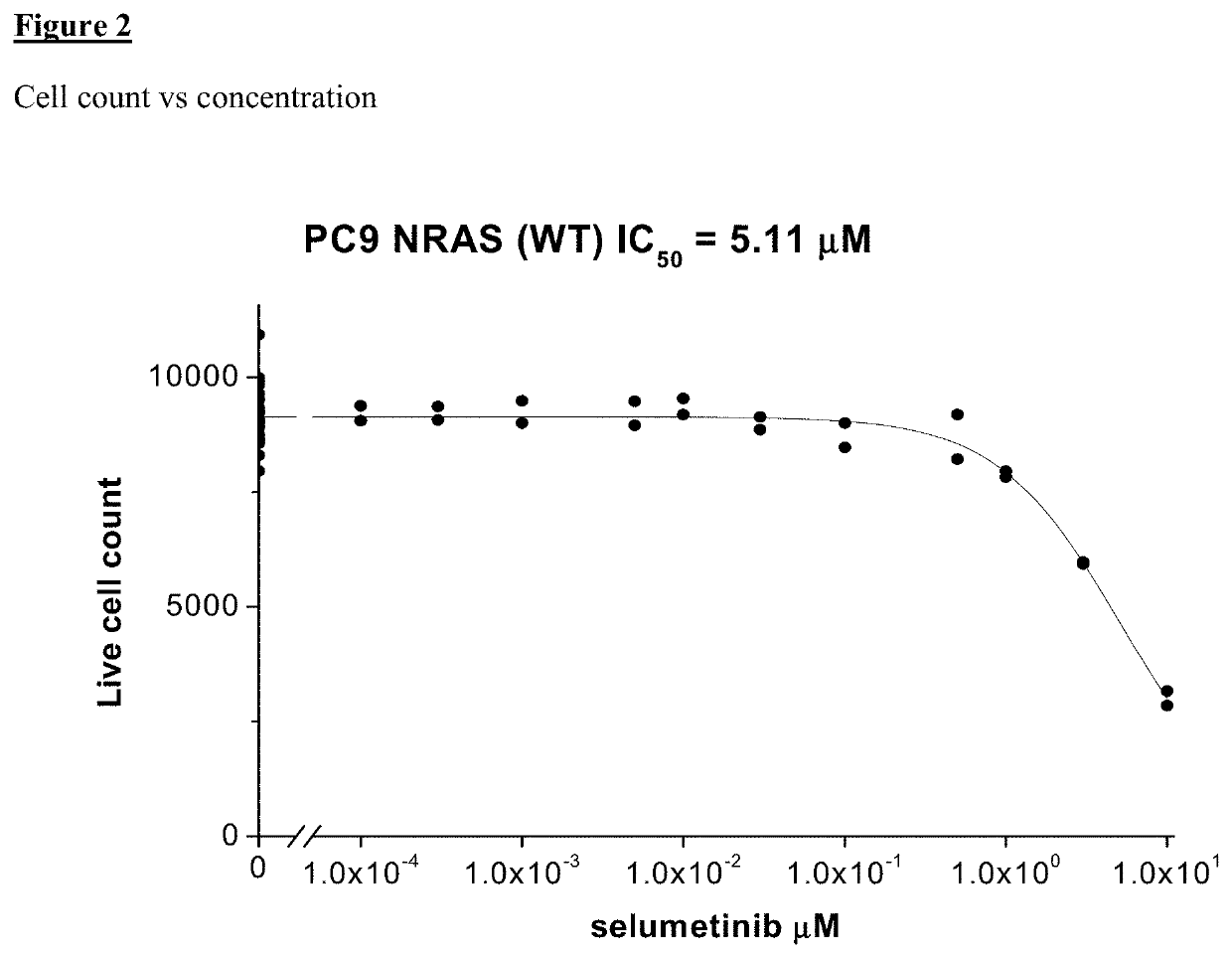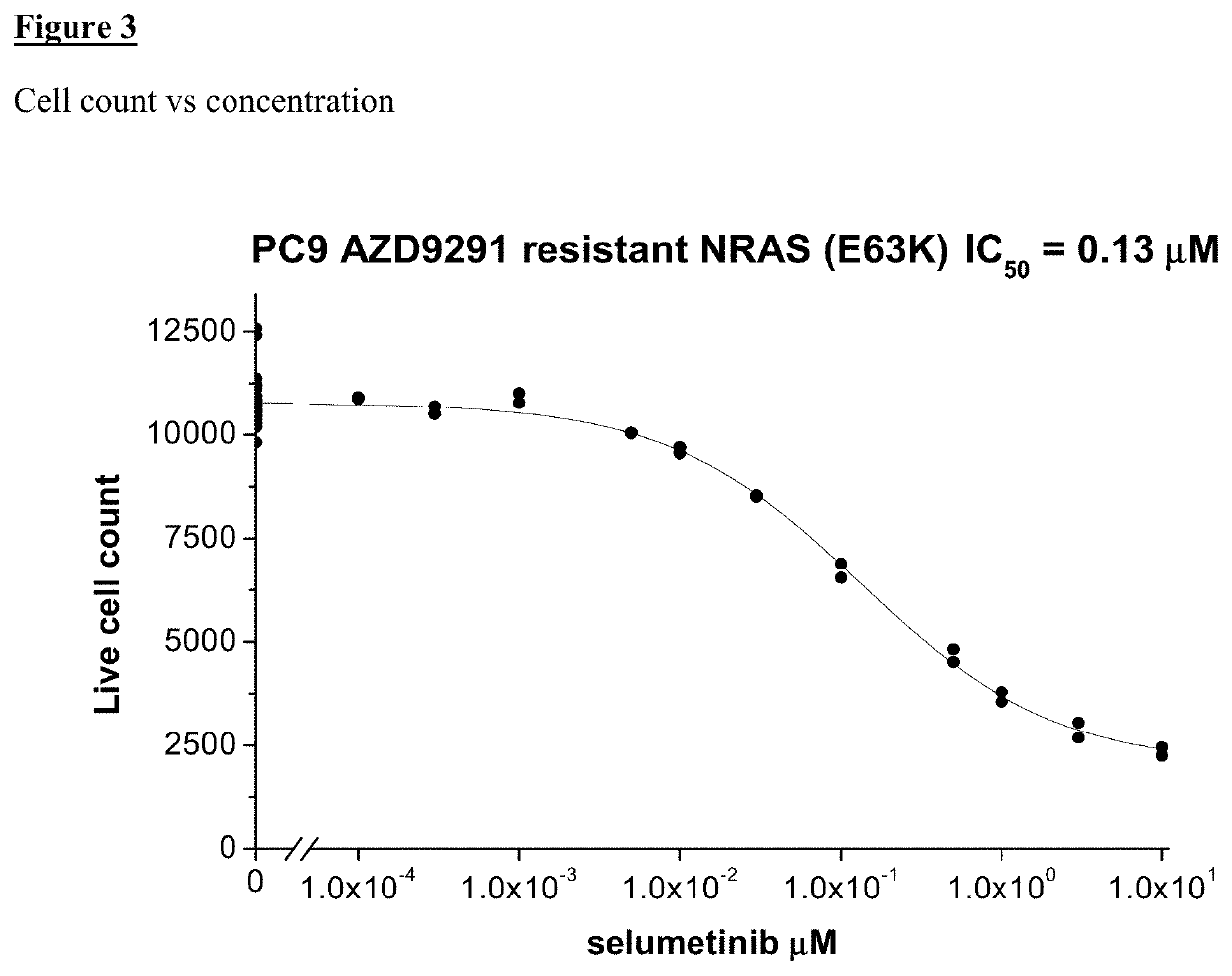Combination of EGFR Inhibitor and MEK Inhibitor for use in the treatment of NRAS mutated cancer
a technology of egfr inhibitor and mek inhibitor, which is applied in the direction of drug composition, genetic material ingredients, respiratory disorders, etc., to achieve the effect of effective first-line therapy and delay or prevent the development of resistan
- Summary
- Abstract
- Description
- Claims
- Application Information
AI Technical Summary
Benefits of technology
Problems solved by technology
Method used
Image
Examples
example 1
n of PC9 Gefitinib-Resistant Cell Population and PC9_AZD9291 Resistant Cell Population
[0684]Reagents
[0685]RPMI-1640 medium (Sigma R7509)
[0686]Dulbeccos Phosphate buffered saline (PBS) (Sigma D8537)
[0687]L-glutamine 200 mM (100×) (Gibco, Life Technologies 25030)
[0688]Foetal Calf Serum (Sigma F7524)
[0689]TrypLE Express (Gibco, Life Technologies 12605)
[0690]AZD9291 and gefitinib (in house)
[0691]Growth Media
[0692]RPMI-1640 medium
[0693]10% Foetal calf serum
[0694]2 mM L-glutamine
[0695]Cells
[0696]PC9 human NSCLC-derived cells.
[0697]All the reagents, compounds and cells are available from commercial sources.
[0698]Generation of PC9 Gefitinib, AZD9291 or Afatinib-Resistant Cell Populations Using a Dose Escalation Method
[0699]PC9 cells were seeded at 5×105 cells in multiple fresh T75 flasks in growth media and incubated at 37° C., 5% CO2. The following day the media in the flasks was removed and replaced with fresh growth media supplemented with either 20 nM gefitinib, 10 nM AZD9291 or 0.8 nM ...
example 2
rofiling of Gefitinib, AZD9291 and Afatinib Resistant PC9 Cell Populations and Identification of NRAS Alterations
[0706]Preparation of Cell Pellets from Resistant Cells
[0707]Samples of the PC9 gefitinib resistant, PC9 AZD9291 resistant and PC9 afatinib resistant cell populations were cultured in T75 flasks until they were about 80% confluent. The cells were trypsinised as described previously and resuspended in a total volume of 10 mls of PBS. The cells were pelleted by centrifuging at 1000 rpm for 5 minutes and washed in a further 10 mL of PBS. The cells were repelleted and as much PBS removed as possible. The cell pellets were frozen at −20° C. for a maximum of 1 week prior to further processing. Similar methods were used to obtain cell pellets from other cell populations, e.g. parental PC9 cells, as necessary.
[0708]Preparation of DNA from Cells
[0709]DNA samples were prepared using the Allprep DNA / RNA / miRNA Universal kit (Qiagen) according to the manufacturer's instructions, and in...
example 4
of Sensitivity of Resistant Cell Lines to a Combination of Selumetinib (MEK Inhibitor) and EGFR Inhibitor
[0721]The effects of a panel of canonical pathway inhibitors on cell growth and survival was measured using a cell assay using Sytox Green staining as an end point.
[0722]Reagents
[0723]RPMI-1640 medium (Sigma R7509)
[0724]Dulbecco's Phosphate buffered saline (PBS) (Sigma D8537)
[0725]L-glutamine 200 mM (100×) (Gibco, Life Technologies 25030)
[0726]Foetal Calf Serum (Sigma F7524)
[0727]TrypLE Express (Gibco, Life Technologies 12605)
[0728]AZD9291 and gefitinib (in house)
[0729]Growth Media
[0730]RPMI-1640 medium
[0731]10% Foetal calf serum
[0732]2 mM L-glutamine
[0733]Sytox Green solution—Sytox Green stain, Invitrogen S7020 5 mM stock diluted to 2 μM in TBS containing 5 mM EDTA pH 7.5
[0734]0.25% Saponin solution per well (Sigma-Aldrich Catalogue number 84510. (Saponin 2.5% stock solution prepared in TBS containing 5 mM EDTA pH 7.5 and filter sterilised)
[0735]Cell Lines Tested:
[0736]PC9 (NRAS...
PUM
 Login to View More
Login to View More Abstract
Description
Claims
Application Information
 Login to View More
Login to View More - R&D
- Intellectual Property
- Life Sciences
- Materials
- Tech Scout
- Unparalleled Data Quality
- Higher Quality Content
- 60% Fewer Hallucinations
Browse by: Latest US Patents, China's latest patents, Technical Efficacy Thesaurus, Application Domain, Technology Topic, Popular Technical Reports.
© 2025 PatSnap. All rights reserved.Legal|Privacy policy|Modern Slavery Act Transparency Statement|Sitemap|About US| Contact US: help@patsnap.com



